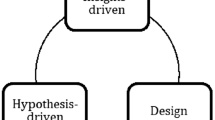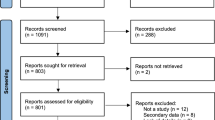Abstract
As the field of Human-Robot Interaction is relatively young and highly interdisciplinary, it often happens that we as researchers make mistakes which could have been avoided had we known more about good and bad research practices in fields other than our own. Bad practices such as convenience sampling, p-hacking, or the Hawthorne effect will be known to some, but are too often unfamiliar to others. HRI is lucky to mature during one of the biggest revolutions in experimental psychology: the “replication crisis” was one of the most seminal moments in psychology and its repercussions are felt far and wide, including in HRI. This chapter lists some of the important mistakes often made in HRI studies and suggest practical recommendations for better research studies.
Access this chapter
Tax calculation will be finalised at checkout
Purchases are for personal use only
Similar content being viewed by others
References
Adair, J.G.: The hawthorne effect: a reconsideration of the methodological artifact. J. Appl. Psychol. 69(2), 334 (1984)
Baxter, P., Kennedy, J., Senft, E., Lemaignan, S., Belpaeme, T.: From characterising three years of HRI to methodology and reporting recommendations. In: The Eleventh ACM/IEEE International Conference on Human Robot Interaction, pp. 391–398. IEEE Press (2016)
Belpaeme, T., Kennedy, J., Ramachandran, A., Scassellati, B., Tanaka, F.: Social robots for education: a review. Sci. Robot. 3(21), eaat5954 (2018)
Berinsky, A.J., Huber, G.A., Lenz, G.S.: Evaluating online labor markets for experimental research: Amazon.com’s mechanical turk. Polit. Anal. 20(3), 351–368 (2012)
Berkowitz, L., Donnerstein, E.: External validity is more than skin deep: some answers to criticisms of laboratory experiments. Am. Psychol. 37(3), 245 (1982)
Boucher, J.D., Pattacini, U., Lelong, A., Bailly, G., Elisei, F., Fagel, S., Dominey, P.F., Ventre-Dominey, J.: I reach faster when i see you look: gaze effects in human-human and human-robot face-to-face cooperation. Front. Neurorobotics 6, 3 (2012)
Buhrmester, M., Kwang, T., Gosling, S.D.: Amazon’s mechanical turk: a new source of inexpensive, yet high-quality, data? Perspect. Psychol. Sci. 6(1), 3–5 (2011)
Collaboration, O.S., et al.: Estimating the reproducibility of psychological science. Science 349(6251), aac4716 (2015)
Cumming, G.: Replication and p intervals: p values predict the future only vaguely, but confidence intervals do much better. Perspect. Psychol. Sci. 3(4), 286–300 (2008)
Dawson, C.: Introduction to research methods. In: A Practical Guide for Anyone Undertaking a Research Project, 5th edn. Robinson (2019)
Esteban, P.G., Baxter, P., Belpaeme, T., Billing, E., Cai, H., Cao, H.L., Coeckelbergh, M., Costescu, C., David, D., De Beir, A., et al.: How to build a supervised autonomous system for robot-enhanced therapy for children with autism spectrum disorder. Paladyn J. Behav. Robot. 8(1), 18–38 (2017)
Field, A., Hole, G.: How to Design and Report Experiments. Sage (2002)
Irfan, B., Kennedy, J., Lemaignan, S., Papadopoulos, F., Senft, E., Belpaeme, T.: Social psychology and human-robot interaction: an uneasy marriage. In: Companion of the 2018 ACM/IEEE International Conference on Human-Robot Interaction, pp. 13–20. ACM (2018)
Kalegina, A., Schroeder, G., Allchin, A., Berlin, K., Cakmak, M.: Characterizing the design space of rendered robot faces. In: Proceedings of the 2018 ACM/IEEE International Conference on Human-Robot Interaction, pp. 96–104. ACM (2018)
Kaptein, M., Robertson, J.: Rethinking statistical analysis methods for CHI. In: Proceedings of the SIGCHI Conference on Human Factors in Computing Systems, pp. 1105–1114. ACM (2012)
Landsberger, H.A.: Hawthorne revisited: management and the worker, its critics, and developments in human relations in industry (1958)
Leite, I., Martinho, C., Paiva, A.: Social robots for long-term interaction: a survey. Int. J. Soc. Robot. 5(2), 291–308 (2013)
Li, J.: The benefit of being physically present: a survey of experimental works comparing copresent robots, telepresent robots and virtual agents. Int. J. Hum.-Comput. Stud. 77, 23–37 (2015)
Maxwell, S.E.: The persistence of underpowered studies in psychological research: causes, consequences, and remedies. Psychol. Methods 9(2), 147 (2004)
Nomura, T., Kanda, T., Kidokoro, H., Suehiro, Y., Yamada, S.: Why do children abuse robots? Interact. Stud. 17(3), 347–369 (2017)
Pashler, H., Wagenmakers, E.J.: Editors’ introduction to the special section on replicability in psychological science: a crisis of confidence? Perspect. Psychol. Sci. 7(6), 528–530 (2012)
Phillips, E., Zhao, X., Ullman, D., Malle, B.F.: What is human-like?: decomposing robots’ human-like appearance using the anthropomorphic robot (ABOT) database. In: Proceedings of the 2018 ACM/IEEE International Conference on Human-Robot Interaction, pp. 105–113. ACM (2018)
Ramachandran, A., Huang, C.M., Scassellati, B.: Give me a break!: personalized timing strategies to promote learning in robot-child tutoring. In: Proceedings of the 2017 ACM/IEEE International Conference on Human-Robot Interaction, pp. 146–155. ACM (2017)
Riek, L.D.: Wizard of oz studies in HRI: a systematic review and new reporting guidelines. J. Hum.-Robot. Interact. 1(1), 119–136 (2012)
Robins, B., Dautenhahn, K., Te Boekhorst, R., Billard, A.: Effects of repeated exposure to a humanoid robot on children with autism. In: Designing a More Inclusive World, pp. 225–236. Springer (2004)
Vidgen, B., Yasseri, T.: P-values: misunderstood and misused. Front. Phys. 4, 6 (2016)
Woods, S., Dautenhahn, K., Kaouri, C.: Is someone watching me?-consideration of social facilitation effects in human-robot interaction experiments. In: Proceedings. 2005 IEEE International Symposium on Computational Intelligence in Robotics and Automation. CIRA 2005, pp. 53–60. IEEE (2005)
Acknowledgements
The author would like to thank Paul Baxter, Bahar Irfan, James Kennedy, Fotios Papadopolous, Séverin Lemaignan, Emmanuel Senft for the discussion and insights used in this chapter.
Author information
Authors and Affiliations
Corresponding author
Editor information
Editors and Affiliations
Rights and permissions
Copyright information
© 2020 Springer Nature Switzerland AG
About this chapter
Cite this chapter
Belpaeme, T. (2020). Advice to New Human-Robot Interaction Researchers. In: Jost, C., et al. Human-Robot Interaction. Springer Series on Bio- and Neurosystems, vol 12. Springer, Cham. https://doi.org/10.1007/978-3-030-42307-0_14
Download citation
DOI: https://doi.org/10.1007/978-3-030-42307-0_14
Published:
Publisher Name: Springer, Cham
Print ISBN: 978-3-030-42306-3
Online ISBN: 978-3-030-42307-0
eBook Packages: Social SciencesSocial Sciences (R0)




